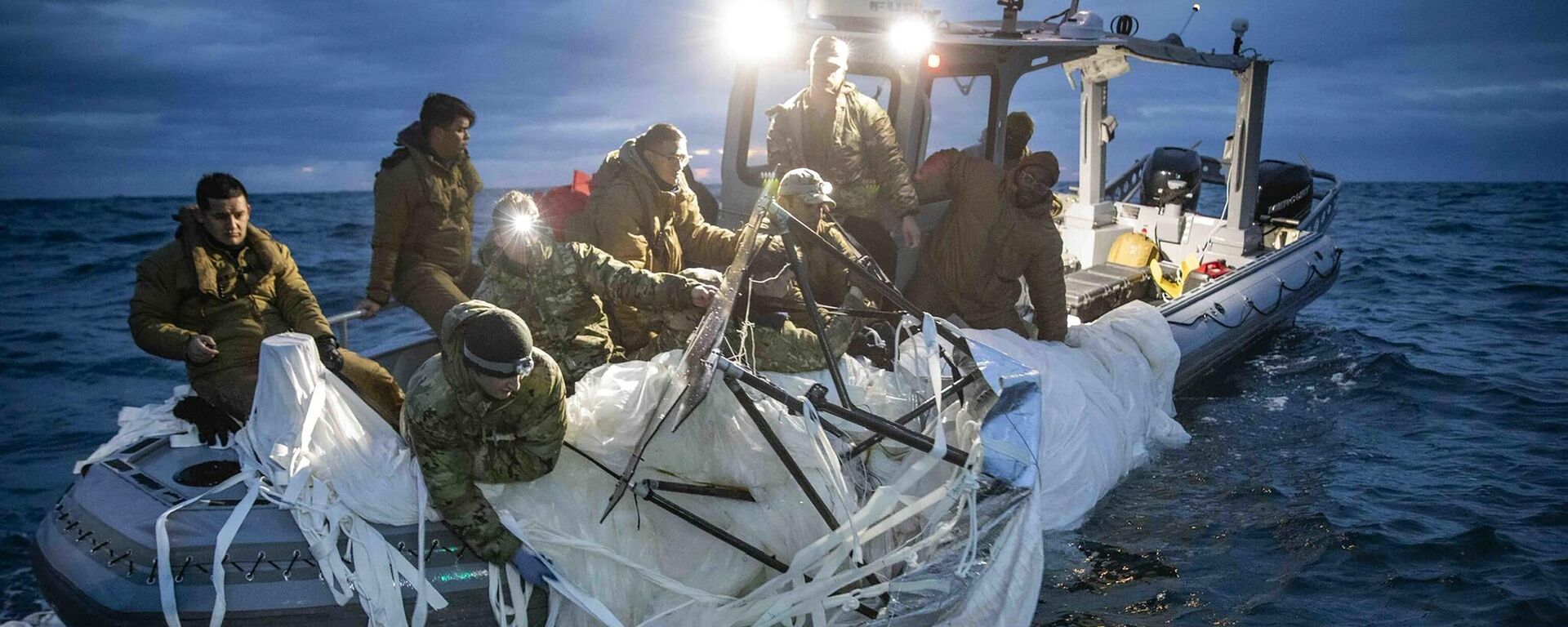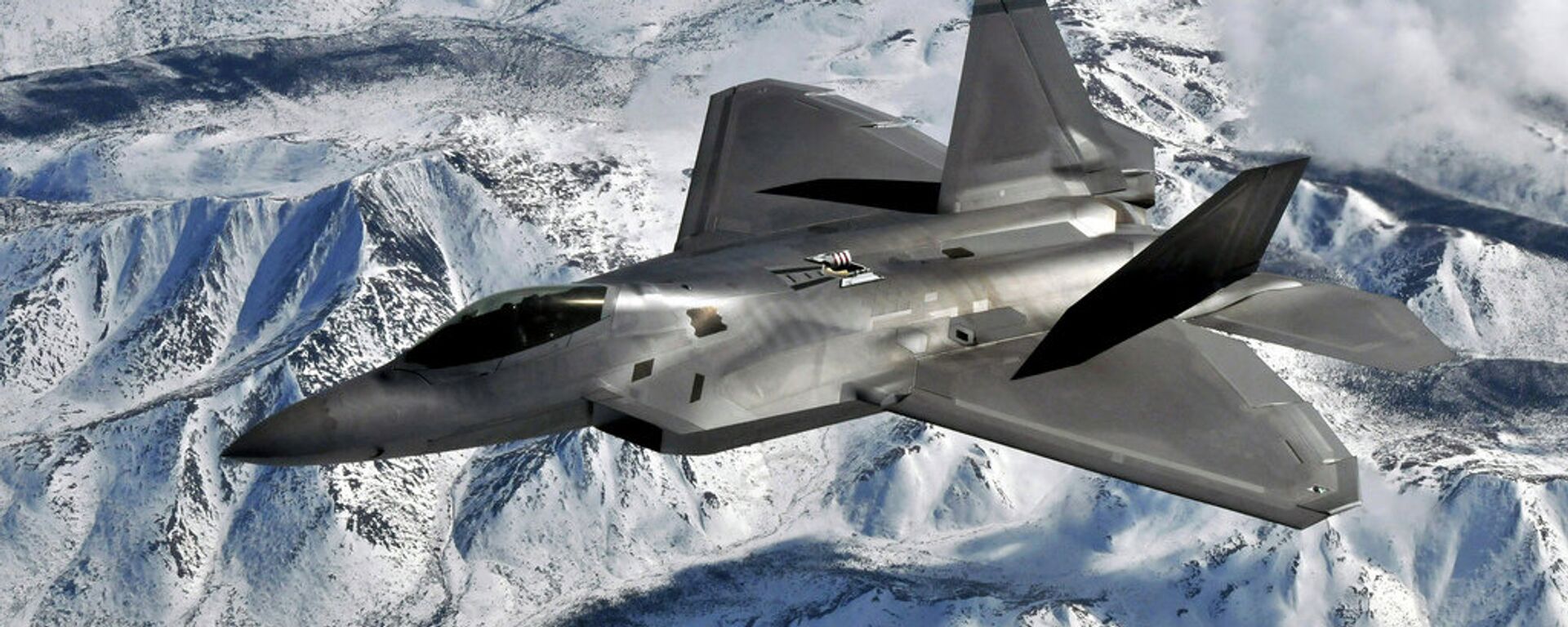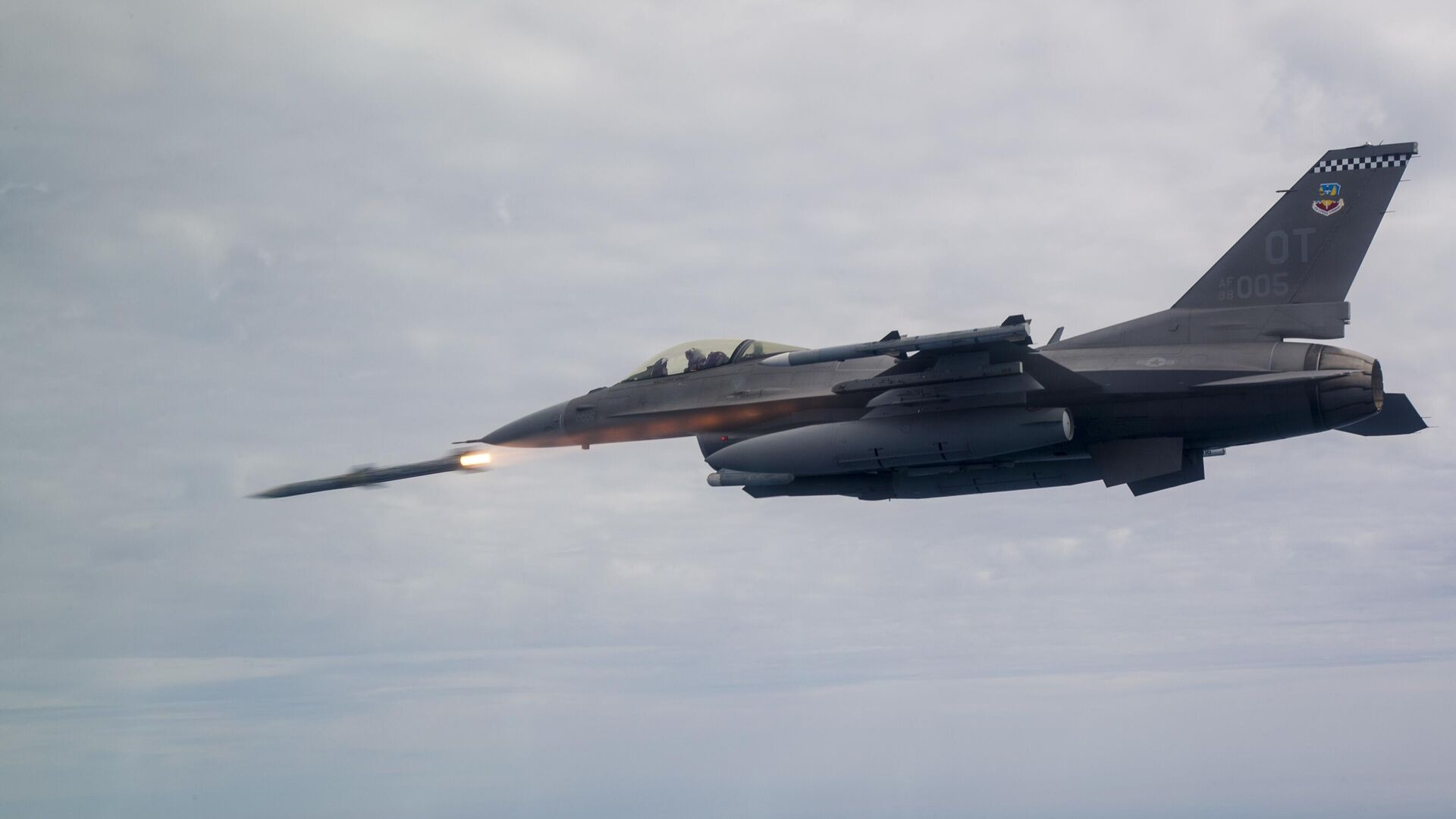https://sputnikglobe.com/20230214/wouldnt-really-call-it-a-balloon-audio-shows-us-pilots-confused-by-object-downed-over-lake-huron-1107430688.html
'Wouldn’t Really Call it A Balloon': Audio Shows US Pilots Confused by Object Downed Over Lake Huron
'Wouldn’t Really Call it A Balloon': Audio Shows US Pilots Confused by Object Downed Over Lake Huron
Sputnik International
A recording of the two F-16 Falcon pilots from the Wisconsin Air National Guard who scrambled to intercept an “octagonal object” near the US-Canada border on Sunday was recently leaked to a US media outlet.
2023-02-14T16:49+0000
2023-02-14T16:49+0000
2025-04-07T11:06+0000
f-16
flying object
lake huron
chinese balloon over us
us
viral news
https://cdn1.img.sputnikglobe.com/img/07e7/02/0e/1107430400_0:149:3109:1898_1920x0_80_0_0_9b67f492985748d9e2ffee71d760d810.jpg
A recording of the two F-16 Falcon pilots from the Wisconsin Air National Guard who scrambled to intercept an “octagonal object” near the US-Canada border on Sunday was recently leaked to a US media outlet. In the audio, the two pilots can be heard attempting to describe the object - and repeatedly failing to capture its essence.However, one of the pilots later adds: “I’m gonna call it a balloon.”That said, they are clearly struggling to make sense of things, since while it seems to look balloon-like in some respects, its characteristics didn't seem to align with what you would typically call a balloon.In terms of size, they variously describe it as “definitely smaller than a car” and about the size of a “four-wheeler” off-road vehicle, although they note that accurately sizing it up “would be challenging, it’s so slow and so small, I just can’t see it.”Its color and material composition is just as much of a struggle. It was described as being both dark and metallic, with the ability to reflect the sun’s rays.He goes on to note that “I’ve got a tone,” indicating his missile has obtained a lock, and that he has a “good track but can’t see through the glare of the cockpit.”Indeed, the Pentagon has stated in the time since the intercept that two AIM-9X Sidewinder heat-seeking missiles were fired at the object, as the first one missed the target. According to reports, both F-16s returned to base with one of their two wingtip-mounted Sidewinders missing, indicating that both pilots took a shot at the object.For what it’s worth, US Gen. Glen D. Vanherck, the head of North American Aerospace Defense Command (NORAD), specifically told reporters on Sunday: "I'm not going to categorize them as balloons. We're calling them objects for a reason."However, there seems to be some disagreement about whether or not the objects were alien spacecraft. The White House said on Monday it doesn’t believe they were, but Vanherck told reporters he wasn’t so sure.“I’ll let the intel community and the counterintelligence community figure that out,” the NORAD chief said. “I haven’t ruled out anything."
https://sputnikglobe.com/20230213/and-then-there-were-four-what-we-know-about-the-high-altitude-objects-shot-down-by-usaf-1107384826.html
https://sputnikglobe.com/20230213/no-link-between-alleged-chinese-spy-balloon-and-latest-downed-objects--national-defence-1107388794.html
https://sputnikglobe.com/20230211/us-v-ufos-whats-known-so-far-about-the-car-sized-object-downed-over-frozen-alaska-waters-1107334176.html
lake huron
Sputnik International
feedback@sputniknews.com
+74956456601
MIA „Rossiya Segodnya“
2023
News
en_EN
Sputnik International
feedback@sputniknews.com
+74956456601
MIA „Rossiya Segodnya“
Sputnik International
feedback@sputniknews.com
+74956456601
MIA „Rossiya Segodnya“
f-16 falcon pilots, scrambled to intercept an “octagonal object”, us pilots confused by object downed over lake huron, object downed over lake huron, chinese balloon over us
f-16 falcon pilots, scrambled to intercept an “octagonal object”, us pilots confused by object downed over lake huron, object downed over lake huron, chinese balloon over us
'Wouldn’t Really Call it A Balloon': Audio Shows US Pilots Confused by Object Downed Over Lake Huron
16:49 GMT 14.02.2023 (Updated: 11:06 GMT 07.04.2025) The Pentagon has been conspicuously mum about the details of the mysterious objects shot down in recent days, aside from saying they don’t believe they were extraterrestrial in origin. Leaked audio from the US Air Force fighter pilots who intercepted one object over Lake Huron reveals they also struggled to describe what they saw.
A recording of the two
F-16 Falcon pilots from the Wisconsin Air National Guard who scrambled to
intercept an “octagonal object” near the US-Canada border on Sunday was recently
leaked to a US media outlet. In the audio, the two pilots can be heard attempting to describe the object - and repeatedly failing to capture its essence.
“I wouldn’t really call it a balloon - I don’t know what. I can see it outside with my eyes,” one of the pilots can be heard saying. “Looks like something - there’s some kind of object that’s distended - it’s hard to tell, it’s pretty small.”
However, one of the pilots later adds: “I’m gonna call it a balloon.”
That said, they are clearly struggling to make sense of things, since while it seems to look balloon-like in some respects, its characteristics didn't seem to align with what you would typically call a balloon.
“In the targeting pod, I can’t tell if it’s metallic or what, but I can see, like, lines coming down below it, but I can’t see anything below it,” one pilot says. “You can definitely see strings below, but don’t see anything hanging below.”

13 February 2023, 17:47 GMT
In terms of size, they variously describe it as “definitely smaller than a car” and about the size of a “four-wheeler” off-road vehicle, although they note that accurately sizing it up “would be challenging, it’s so slow and so small, I just can’t see it.”
Its color and material composition is just as much of a struggle. It was described as being both dark and metallic, with the ability to reflect the sun’s rays.
“Looking outside it’s like a black-ish, I’m gonna call it like a container, can’t really tell though what the shape is,” one pilot says.
He goes on to note that “I’ve got a tone,” indicating his missile has obtained a lock, and that he has a “good track but can’t see through the glare of the cockpit.”
“It looks dark, but I can get a pretty good sun glint off of it,” the other pilot says.
Indeed, the Pentagon
has stated in the time since the intercept that two AIM-9X Sidewinder heat-seeking missiles were fired at the object, as the first one missed the target. According to reports, both F-16s returned to base with one of their two wingtip-mounted Sidewinders missing, indicating that both pilots took a shot at the object.

13 February 2023, 23:24 GMT
If it was a balloon, it’s unclear what material it could have been made of to produce such an appearance. Small party balloons can be made of metalized plastic, but larger balloons such as those used for flying in the atmosphere are typically made of rubber latex, or nylon fabric.
For what it’s worth, US Gen. Glen D. Vanherck, the head of North American Aerospace Defense Command (NORAD), specifically told reporters on Sunday: "I'm not going to categorize them as balloons. We're calling them objects for a reason."

11 February 2023, 04:10 GMT
The Pentagon has also said there is no indication the three most recent objects downed were for surveillance or Chinese in origin - claims they have made about a large, 200-foot-tall balloon shot down two weeks ago after it transited North America. Beijing says it was a civilian scientific balloon that escaped.
However, there seems to be some disagreement about whether or not the objects were alien spacecraft. The White House said on Monday it doesn’t believe they were, but Vanherck told reporters he wasn’t so sure.
“I’ll let the intel community and the counterintelligence community figure that out,” the NORAD chief said. “I haven’t ruled out anything."




